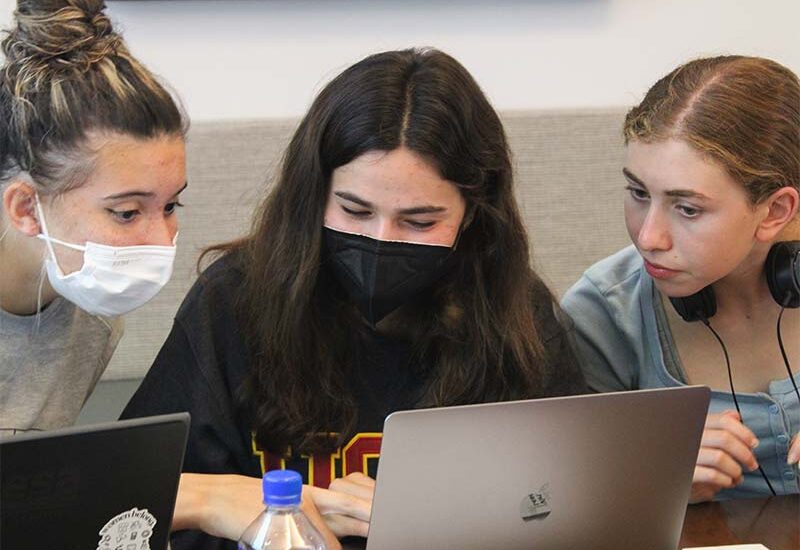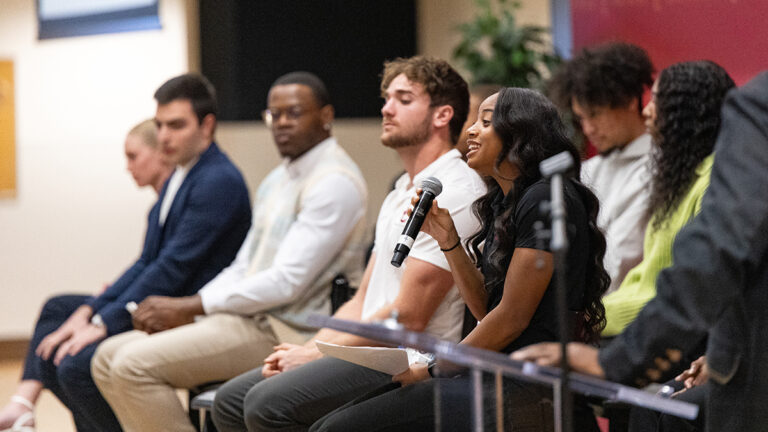
USC Shoah Foundation Redesigns Visual History Archive
Past, present and future: Redesigned visual history archive to expand global access to Holocaust and genocide testimonies
USC Shoah Foundation releases a complete redesign of its Visual History Archive to expand global access to Holocaust and genocide testimonies.
USC Shoah Foundation today releases a complete redesign of its Visual History Archive (VHA), the world’s largest collection of primary source video testimonies from survivors of the Holocaust and other genocides.
Created in 1999 as a one-terabyte cache of Holocaust survivor testimonies, the VHA has since transformed into a collection of more than 55,000 interviews—an invaluable resource for researchers and educators, students, filmmakers, policymakers, and journalists, as well as the foundation for USC Shoah Foundation’s global programs.
The rebuild of the VHA’s interface brings a range of improvements: a modern look and feel; greater sharing capability with other researchers; integration into other USC Shoah Foundation interfaces; faster, broader and more seamless access to content; transcripts as well as cataloging and upgraded mobile capabilities. Together, these new features enable users to find, view, store, and engage with survivor and witness testimony with unprecedented ease.
Sam Gustman, Chief Technology Officer of USC Shoah Foundation, said infrastructure improvements to the internet over the past two decades have enabled a “wildly inventive” redesign of the VHA.
“We’ve been able to imagine and realize this new interface because we are no longer restricted by the capacity of internet streaming networks,” Gustman said. “The result is an incredible new resource that humanizes testimony in a way that has never before been possible.”
As with its previous iteration, the new VHA interface is available through ProQuest, one of the largest research database distributors in the world. ProQuest has relationships with over 26,000 libraries in over 150 countries, reaching more than 130 million students and universities around the world.
Along with testimonies from the Holocaust, the VHA contains first-hand accounts from survivors and witnesses to the Armenian Genocide, genocides in Cambodia, Central African Republic, Guatemala, the 1994 Genocide Against the Tutsi in Rwanda, the Nanjing Massacre and, most recently, ethnic violence against the Rohingya in Myanmar, the Yazidi in northern Iraq, the Kurds in northern Syria and current antisemitic violence.
USC Shoah Foundation’s Finci-Viterbi Executive Director Robert Williams said the redesigned VHA furthers the Institute’s foundational promise to survivors and witnesses of the Holocaust and other genocides.
“Through its programming and innovation, USC Shoah Foundation has long been at the forefront of the ethical use of technology to acquire, preserve, and make accessible the testimonies of Survivors,” Dr. Williams said. “This is essential because technology is often the medium through which we see the world, and it is a mechanism through which we can continue to learn from Survivors long after they are no longer able to be with us in person.”
The new VHA comes at the end of a multi-faceted five-year initiative focused on expanding worldwide sustainable access to the testimonies, the Lee Liberman Visual History Archive Program.
Lee Liberman AM, who recently transitioned out of the chair role with the Institute after a successful term as Chair of the Institute’s Board of Councilors, said the new VHA will increase audience interaction and boost engagement—both prerequisites to combating prejudice, intolerance and hatred through education and community-building—at a particularly critical time.
“Tens of thousands of survivors summoned the courage to share their painful and remarkable stories with the Institute because they wanted the world to remember what happens when a culture of intolerance goes unchallenged,” Liberman said.
“In the face of a horrifying resurgence of antisemitism, nativism and xenophobia, we must listen to their repeated individual and collective messages in order to prevent hatred from casting its dark shadows over humanity again.“
Liberman’s foundational $5 million gift launched attracted other major donors to the project, including the Koret Foundation and Crown Family Philanthropies.
Jeff Farber, CEO of the Koret Foundation, extolled the power of testimony in developing empathy and countering prejudice.
“Personal stories and perspective of survivors are one of the best educational tools for teaching about the Holocaust,” Farber said. “We are proud to partner with the Lee Liberman Foundation to transform the way people access and interact with testimony, in the hopes we will build a more tolerant society and inclusive future.”
The new interface is available at vha.usc.edu. After today’s launch, the legacy VHA will no longer be available.
Click here to watch these intro videos about VHA and access FAQs: https://vha.usc.edu/help

